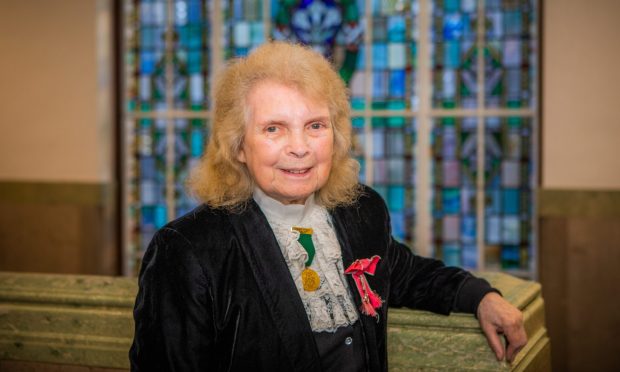Nan Shepherd has been having a moment recently, especially since lockdown.
In those days of reconnection with nature, for those who were lucky enough to be able to get outside, the famed nature writer and mountaineer from Deeside – whose book The Living Mountain forever connected her with the Cairngorms – had never been more fashionable.
It’s not bad going, considering Shepherd died in very old age in 1981.
Yet, just like the version of her which communes with recently bereaved hillwalker Cath in this tender and thoughtful new play by Sylvia Dow, she continues to speak to those who hear her message in all manner of ways.
On designer Karen Tennent’s jaggy series of platform outcrops, Cath (Pauline Lockhart) moves around in the rugged tranquillity of the Cairngorms.
She calls to Shepherd (Fletcher Mathers), aware she’s there, and her mind’s ghost of the other woman literally emerges from within the hill.
What follows is essentially Cath’s inner monologue, but designed as a conversation between her, her imagined version of Shepherd and Shepherd’s own writing.
‘Bioplay by stealth’ of Nan Shepherd
In playwright Dow and director Becky Hope-Palmer’s play, it’s a low-key but satisfying realisation of the way your mind tends to wander and work out solutions while you’re walking.
It’s partly a bioplay of Shepherd by stealth, not dryly listing her life and achievements, so much as introducing the audience to who she was and why she’s important.
The women discuss hillwalking and an appreciation of nature and the outdoors, of course, but Shepherd was also a pioneer of female independence.
It’s on this subject that the play circles back to Cath, who it’s really about – a woman in late middle-age who has given up much of her life to care for her late mother, and is now out on the hill working out her grief and lingering resentment by searching for a feeling of freedom in nature.
Shepherd’s writing won’t die; already, Pitlochry Festival Theatre has announced another show about her for next year.
This one is an hour well spent, and a very welcome exploration of rediscovery in elder life.
Woman Walking is touring Scotland until Saturday October 21.











